Opinion & Analysis
The Facts About Single Length Irons
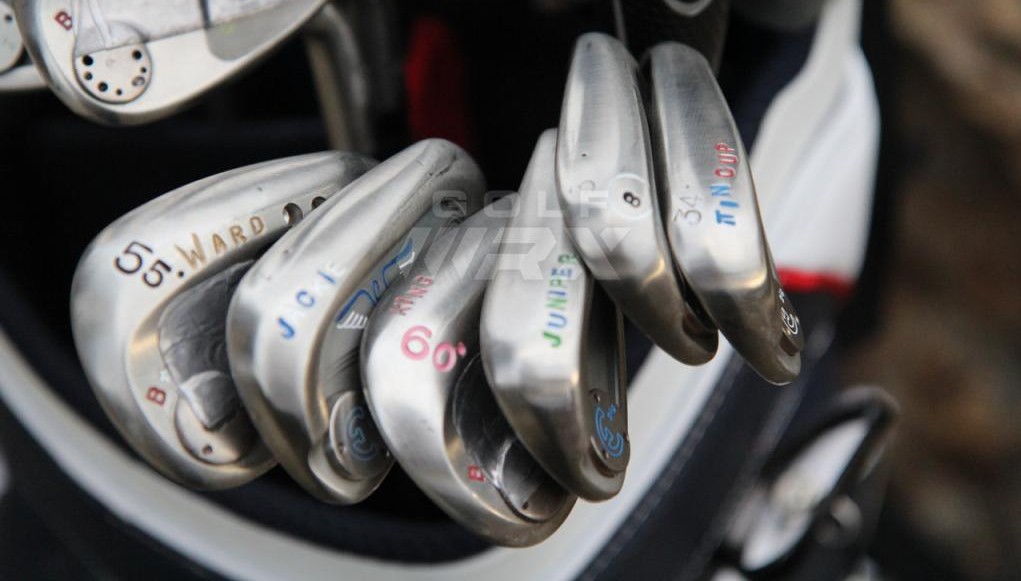
There has been a LOT of discussion lately about single-length iron sets. So much, in fact, that as a club builder and fitter single-length irons have become a daily topic of conversation.
Most of this buzz about single-length irons has been created by reigning U.S Amateur and NCAA Division I Individual champion Bryson DeChambeau, who has been very successful using a custom set of single-length irons made by Edel, a boutique equipment company in Texas.
Related: Bryson DeChambeau WITB 2016
Edel isn’t the first company to build a set of single-length irons. Tommy Armour built and marketed a set called the EQL’s in the 80’s, and there have been a few other niche companies who have been building these sets for a long time, including One Iron Golf. Recently, Tom Wishon and Jaacob Bowden released a set of single-length irons. Named Sterling Irons, they’re designed to be built shorter than others. At 36.5 inches, they’re each about the length of an 8-iron.
Related: Learn more about Sterling Irons
All of the sets listed above have one thing in common; they were designed with the sole purpose of being built to a single length. With this trend gaining more interest from the general golfing public the most popular questions are:
- Can single length irons work for me?
- Can I make my current set into a single-length set?
I’m going to explain the differences between a standard set of irons and single-length irons, why it’s difficult to convert a standard set of irons to single length and what is needed to make sure proper gapping is achieved throughout the set.
According to DeChambeau and the team at Edel, his set took many attempts to get just right. And as a club builder who is getting requests for this type of set, it’s difficult to explain the small nuances involved to golfers, especially those players looking to do this to either an existing set or to a new one built from scratch using standard OEM components. It’s also difficult to fit a golfer for this type of set because of the cost associated with having enough club heads of varying lofts to properly fit for distance gapping.
The other piece of information that I don’t believe has been mentioned enough as it pertains to the average golfer is that DeChambeau is a finely tuned athlete who swings his 45-inch driver at more than 120 mph. Most club players can only swing that fast in their dreams, and DeChambeau’s speed gives him a distinct advantage with his irons.
If you give a golfer five clubs of the same length, shaft flex, total weight, and swing weight, they will swing them at almost exactly the same speed. Give that golfer a traditional set of irons that are built with shafts that get approximately 0.5-inches longer as the iron number decreases (with the same shaft, shaft flex, swing weight and a decreasing head weight of 7-to-10 grams per club), however, and they will likely swing each club 2-3 mph faster as they move up the set.
The increased clubhead speed translates into faster ball speeds in the longer irons, which is needed to maintain a consistent peak height from the lower-lofted clubs, also know as a consistent flight window. Smash Factor also slowly increases, because the reduced loft will transfer more energy into the ball (the contact is less “glancing” or oblique), creating faster ball speeds with the longer clubs.
Distance gapping can become an issue in the longer clubs with a single-length iron set, because swing speed does not stay the same as loft is reduced. That’s why DeChambeau’s custom Edel set uses bigger loft gaps (5 degrees) in the longer clubs. Wishon’s Sterling irons do not have this design, but he addressed the issue by making the faces of his long irons “hotter,” which has the same effect.
Here is where things become very difficult from a building perspective. Standard head weights for irons are not designed to be built to the same length. They are engineered for a company’s specific length progression, generally 0.5 inches between clubs.
The chart below demonstrates the difference in club head mass between standard head weights of a set built to roughly D3 and a set of single-length irons.
 Also, the lies and loft of standard irons are not designed to be bent past a certain point, which can cause detriment to the playing characteristics of the club head.
Also, the lies and loft of standard irons are not designed to be bent past a certain point, which can cause detriment to the playing characteristics of the club head.
DeChambeau plays his entire set at 73-degree lie angle, which is more upright than the lie angle of most off-the-rack putters! Trying to bend a set of standard iron heads to these angles would either totally mar the hosels or cause them to break, especially considering many irons now are made of multiple materials and advanced constructions. DeChambeau’s Edel irons, on the other hand, are forged and more easily bent.
It should also be noted that DeChambeau’s irons are manufactured so there is no negative effect on performance. And his extremely upright lie angles are the result of his unique swing mechanics, and are not necessary to use a single-length iron set.
The chart below demonstrates standard lie angles vs. DeChambeau’s Clubs.
Going back to the issue of gapping, with a set of single-length clubs, lofts need to be adjusted accordingly to make sure that golfers have proper yardage gaps between clubs. With any player, the gapping will depending on swing speed.
The Trackman data below shows some interesting information based my testing a set of single-length irons (37.5 inches) and a set of irons built to standard lengths with frequency matched shafts, matching swing weights, and built in 0.5-inch increments.
The conclusion is that single-length irons might be the perfect solution to creating more consistency in your golf game, but just like buying a new driver or standard set of irons, be sure to visit a proper club fitter. It will take some time to find the right components to fit your needs.
Opinion & Analysis
The 2 primary challenges golf equipment companies face

As the editor-in-chief of this website and an observer of the GolfWRX forums and other online golf equipment discourse for over a decade, I’m pretty well attuned to the grunts and grumbles of a significant portion of the golf equipment purchasing spectrum. And before you accuse me of lording above all in some digital ivory tower, I’d like to offer that I worked at golf courses (public and private) for years prior to picking up my pen, so I’m well-versed in the non-degenerate golf equipment consumers out there. I touched (green)grass (retail)!
Complaints about the ills of and related to the OEMs usually follow some version of: Product cycles are too short for real innovation, tour equipment isn’t the same as retail (which is largely not true, by the way), too much is invested in marketing and not enough in R&D, top staffer X hasn’t even put the new driver in play, so it’s obviously not superior to the previous generation, prices are too high, and on and on.
Without digging into the merits of any of these claims, which I believe are mostly red herrings, I’d like to bring into view of our rangefinder what I believe to be the two primary difficulties golf equipment companies face.
One: As Terry Koehler, back when he was the CEO of Ben Hogan, told me at the time of the Ft Worth irons launch, if you can’t regularly hit the golf ball in a coin-sized area in the middle of the face, there’s not a ton that iron technology can do for you. Now, this is less true now with respect to irons than when he said it, and is less and less true by degrees as the clubs get larger (utilities, fairways, hybrids, drivers), but there remains a great deal of golf equipment truth in that statement. Think about it — which is to say, in TL;DR fashion, get lessons from a qualified instructor who will teach you about the fundamentals of repeatable impact and how the golf swing works, not just offer band-aid fixes. If you can’t repeatably deliver the golf club to the golf ball in something resembling the manner it was designed for, how can you expect to be getting the most out of the club — put another way, the maximum value from your investment?
Similarly, game improvement equipment can only improve your game if you game it. In other words, get fit for the clubs you ought to be playing rather than filling the bag with the ones you wish you could hit or used to be able to hit. Of course, don’t do this if you don’t care about performance and just want to hit a forged blade while playing off an 18 handicap. That’s absolutely fine. There were plenty of members in clubs back in the day playing Hogan Apex or Mizuno MP-32 irons who had no business doing so from a ballstriking standpoint, but they enjoyed their look, feel, and complementary qualities to their Gatsby hats and cashmere sweaters. Do what brings you a measure of joy in this maddening game.
Now, the second issue. This is not a plea for non-conforming equipment; rather, it is a statement of fact. USGA/R&A limits on every facet of golf equipment are detrimental to golf equipment manufacturers. Sure, you know this, but do you think about it as it applies to almost every element of equipment? A 500cc driver would be inherently more forgiving than a 460cc, as one with a COR measurement in excess of 0.83. 50-inch shafts. Box grooves. And on and on.
Would fewer regulations be objectively bad for the game? Would this erode its soul? Fortunately, that’s beside the point of this exercise, which is merely to point out the facts. The fact, in this case, is that equipment restrictions and regulations are the slaughterbench of an abundance of innovation in the golf equipment space. Is this for the best? Well, now I’ve asked the question twice and might as well give a partial response, I guess my answer to that would be, “It depends on what type of golf you’re playing and who you’re playing it with.”
For my part, I don’t mind embarrassing myself with vintage blades and persimmons chasing after the quasi-spiritual elevation of a well-struck shot, but that’s just me. Plenty of folks don’t give a damn if their grooves are conforming. Plenty of folks think the folks in Liberty Corner ought to add a prison to the museum for such offences. And those are just a few of the considerations for the amateur game — which doesn’t get inside the gallery ropes of the pro game…
Different strokes in the game of golf, in my humble opinion.
Anyway, I believe equipment company engineers are genuinely trying to build better equipment year over year. The marketing departments are trying to find ways to make this equipment appeal to the broadest segment of the golf market possible. All of this against (1) the backdrop of — at least for now — firm product cycles. And golfers who, with their ~15 average handicap (men), for the most part, are not striping the golf ball like Tiger in his prime and seem to have less and less time year over year to practice and improve. (2) Regulations that massively restrict what they’re able to do…
That’s the landscape as I see it and the real headwinds for golf equipment companies. No doubt, there’s more I haven’t considered, but I think the previous is a better — and better faith — point of departure when formulating any serious commentary on the golf equipment world than some of the more cynical and conspiratorial takes I hear.
Agree? Disagree? Think I’m worthy of an Adam Hadwin-esque security guard tackle? Let me know in the comments.
@golfoncbs The infamous Adam Hadwin tackle ? #golf #fyp #canada #pgatour #adamhadwin ? Ghibli-style nostalgic waltz – MaSssuguMusic
Podcasts
Fore Love of Golf: Introducing a new club concept

Episode #16 brings us Cliff McKinney. Cliff is the founder of Old Charlie Golf Club, a new club, and concept, to be built in the Florida panhandle. The model is quite interesting and aims to make great, private golf more affordable. We hope you enjoy the show!
Opinion & Analysis
On Scottie Scheffler wondering ‘What’s the point of winning?’

Last week, I came across a reel from BBC Sport on Instagram featuring Scottie Scheffler speaking to the media ahead of The Open at Royal Portrush. In it, he shared that he often wonders what the point is of wanting to win tournaments so badly — especially when he knows, deep down, that it doesn’t lead to a truly fulfilling life.
View this post on Instagram
“Is it great to be able to win tournaments and to accomplish the things I have in the game of golf? Yeah, it brings tears to my eyes just to think about it because I’ve literally worked my entire life to be good at this sport,” Scheffler said. “To have that kind of sense of accomplishment, I think, is a pretty cool feeling. To get to live out your dreams is very special, but at the end of the day, I’m not out here to inspire the next generation of golfers. I’m not out here to inspire someone to be the best player in the world, because what’s the point?”
Ironically — or perhaps perfectly — he went on to win the claret jug.
That question — what’s the point of winning? — cuts straight to the heart of the human journey.
As someone who’s spent over two decades in the trenches of professional golf, and in deep study of the mental, emotional, and spiritual dimensions of the game, I see Scottie’s inner conflict as a sign of soul evolution in motion.
I came to golf late. I wasn’t a junior standout or college All-American. At 27, I left a steady corporate job to see if I could be on the PGA Tour starting as a 14-handicap, average-length hitter. Over the years, my journey has been defined less by trophies and more by the relentless effort to navigate the deeply inequitable and gated system of professional golf — an effort that ultimately turned inward and helped me evolve as both a golfer and a person.
One perspective that helped me make sense of this inner dissonance around competition and our culture’s tendency to overvalue winning is the idea of soul evolution.
The University of Virginia’s Division of Perceptual Studies has done extensive research on reincarnation, and Netflix’s Surviving Death (Episode 6) explores the topic, too. Whether you take it literally or metaphorically, the idea that we’re on a long arc of growth — from beginner to sage elder — offers a profound perspective.
If you accept the premise literally, then terms like “young soul” and “old soul” start to hold meaning. However, even if we set the word “soul” aside, it’s easy to see that different levels of life experience produce different worldviews.
Newer souls — or people in earlier stages of their development — may be curious and kind but still lack discernment or depth. There is a naivety, and they don’t yet question as deeply, tending to see things in black and white, partly because certainty feels safer than confronting the unknown.
As we gain more experience, we begin to experiment. We test limits. We chase extreme external goals — sometimes at the expense of health, relationships, or inner peace — still operating from hunger, ambition, and the fragility of the ego.
It’s a necessary stage, but often a turbulent and unfulfilling one.
David Duval fell off the map after reaching World No. 1. Bubba Watson had his own “Is this it?” moment with his caddie, Ted Scott, after winning the Masters.
In Aaron Rodgers: Enigma, reflecting on his 2011 Super Bowl win, Rodgers said:
“Now I’ve accomplished the only thing that I really, really wanted to do in my life. Now what? I was like, ‘Did I aim at the wrong thing? Did I spend too much time thinking about stuff that ultimately doesn’t give you true happiness?’”
Jim Carrey once said, “I think everybody should get rich and famous and do everything they ever dreamed of so they can see that it’s not the answer.”
Eventually, though, something shifts.
We begin to see in shades of gray. Winning, dominating, accumulating—these pursuits lose their shine. The rewards feel more fleeting. Living in a constant state of fight-or-flight makes us feel alive, yes, but not happy and joyful.
Compassion begins to replace ambition. Love, presence, and gratitude become more fulfilling than status, profits, or trophies. We crave balance over burnout. Collaboration over competition. Meaning over metrics.
Interestingly, if we zoom out, we can apply this same model to nations and cultures. Countries, like people, have a collective “soul stage” made up of the individuals within them.
Take the United States, for example. I’d place it as a mid-level soul: highly competitive and deeply driven, but still learning emotional maturity. Still uncomfortable with nuance. Still believing that more is always better. Despite its global wins, the U.S. currently ranks just 23rd in happiness (as of 2025). You might liken it to a gifted teenager—bold, eager, and ambitious, but angsty and still figuring out how to live well and in balance. As much as a parent wants to protect their child, sometimes the child has to make their own mistakes to truly grow.
So when Scottie Scheffler wonders what the point of winning is, I don’t see someone losing strength.
I see someone evolving.
He’s beginning to look beyond the leaderboard. Beyond metrics of success that carry a lower vibration. And yet, in a poetic twist, Scheffler did go on to win The Open. But that only reinforces the point: even at the pinnacle, the question remains. And if more of us in the golf and sports world — and in U.S. culture at large — started asking similar questions, we might discover that the more meaningful trophy isn’t about accumulating or beating others at all costs.
It’s about awakening and evolving to something more than winning could ever promise.







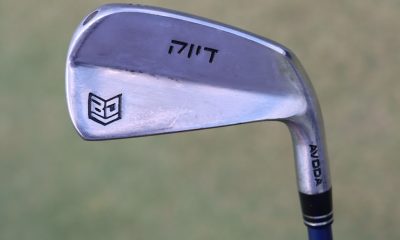

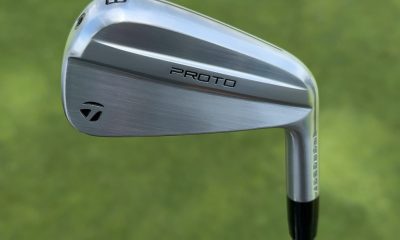

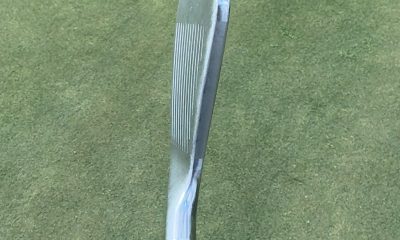

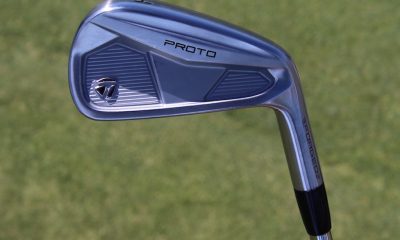



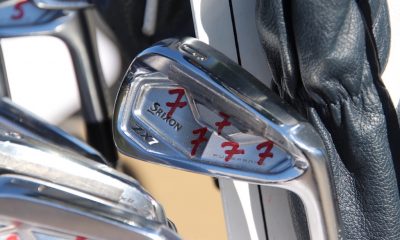









Bruce Gerhold
Mar 18, 2016 at 1:58 pm
I used conventional club heads and fabricated a set of MOI matched clubs using a 2 length concept. This could be an alternate set that a player would find useful: I have played these for several months no plans to return to variable length, variable weight clubs.
I hold advanced degrees in Mechanical Engineering where I studied the science and mathematics of moving bodies. My career was in R&D work so tinkering with club fabrication is a natural. I’ll outline my fabrication below.
The clubheads are a cavity back design with and undercut behind the face ( Hireko Prophet CB cast perimeter with a forged, hardened stainless face Note the lofts are 1 club number lower than conventional to artificially add length but I refer to conventional loft club numbers below. http://www.hirekogolf.com/golf-components/clubheads/golf-irons/dynacraft-prophet-cb-iron-clubhead.html ). I selected these based on excellent feel of the forged face inserts and the undercut offers a convenient place to add weight that is well supported mechanically and will remain on the club head. The 2, 3, 4, 5 irons are same length, same shaft, same shaft trim (5 iron), same grip. I used two techniques to add weight to the club heads so they all equaled the 5 iron ( 263 g) : first, I mixed tungsten powder and shafting epoxy forming a self leveling mix, then put the mix in the cavity allowing it to settle to the bottom of the undercut and distribute evenly. When greater than 10 grams is required, I used 1/4 oz “egg” shaped lead fishing sinkers that were flattened to fit into the undercut – one in the toe and one in the heel. I then used the tungsten powder + epoxy to trim the weight and pot in the lead pieces. Both methods function well with no weight lost while playing and practicing. The long irons are 37 inches long.
The 6, 7, 8, 9 are made similarly with weight equal to the 8 iron ( 284 g ), shaft trim of an 8 iron and no weight on the 9 iron (simply made it 3/8 shorter for constant total club MOI). The short irons are 36 inches long. Since the short irons are shorter, but with increased head weight, the club MOI equals that of the long irons as measured with a pendulum technique. Note: the MOI is the moment of inertial of the entire club about the point between the hands (pivot point for club release which is what generates speed). The concept of swingweight is not supported by science and I (and many others) take as meaningless.
I find that even though I have 2 club lengths, the ball position is roughly the same for the 2 lengths with the longer clubs played one ball forward of the short clubs.. The common set up tremendously simplifies your game and leads to solid iron play. I flattened lie angle somewhat on the 5,4 and 8,9 but hesitated to bend too much because they are a cast body (2 degree max bending recommended). My 2 length clubs play just fine with minimal lie adjustments because the 2 lengths effectively give a lie adjustment.
My results show NO SHOT DISTANCE PROBLEMS. The length of a shot depends on club loft, club momentum (speed times MASS), and hitting the sweet spot. The added club head mass compensates for the shorter shaft, and I hit much more solid shots due to a controllable club length. 9 iron 120 and 2 iron 195 with normal type spacing for the intermediate clubs.
Lawrence Savage
Mar 18, 2016 at 1:01 pm
I bought a set of 1 Iron clubs because I thought it sounded like a really good idea. These were the problems I experienced:
1. The look on some clubs (3i, 4i and particularly wedges) was a bit off putting
2. I hit shorter shots in general, even though the lofts were nearly identical to my previous set. This was an absolute confidence killer. My swing speed is very middle of the road and I found that 3i and 4i were barely longer than 5i
3. I found the shafts in the wedges a little bit whippy, which may have contributed to reduced distance
4. The larger grips took a bit of getting used to, and I went from hitting a relatively predictable draw to an semi-controlled fade
5. Chipping was much harder from Kikuyu grass because of the low bounce of 3° (except SW at 6°) – certainly it was awkward-feeling chipping with a 7i-length LW at first
6. The grooves absolutely mashed the golf balls covers. In fact if one were super particular it would be one shot one ball, so much was the scuffing. This was a real sore point since the ZAR:USD exchange rate has made decent balls very expensive now
7. I went out six shots on handicap over five months – this was the death knell for me
I eventually went back to my old set and after a year I recovered my old form, in fact I reached my lowest hcp. It was a really expensive experiment, but super glad I tried it. Maybe when I’m older I would consider them again.
Ash
Mar 18, 2016 at 12:52 pm
The article ‘borrows’ heavily from members comments in the forums. A key point left out is that Bryson D, with Edel Golf, have adjusted heads so that the weights are IDENTICAL. Missing that vital point renders this article worthless.
Gisle Solhaug
Mar 17, 2016 at 10:25 am
The advantage of single length sets of irons is that your muscle memory will only have to learn one swing for your set of irons rather than one swing for each club. The same can be achieved on a standard set of golf clubs by optimizing the weight of each club by adding a specific weight to the grip end of the club. As the ball position and club length differ on a traditional set, so must the weight of each club. The calculations to obtain this exact weight is complex and involves building a computer model of your body swinging each of your clubs. You will then have the same swing for every club in your bag, except the putter of course. By making every club the same length, the ball position will be the same for every club at setup. Therefore, the clubs will be perfectly matched when they all have the same weight and MOI. And they will all have the same Swingweight, for those of you that care about that. The disadvantage of a single length set of irons is that you still need to apply a different swing for all the other clubs in the bag. What if you could have the same swing for all the clubs? That would make the game a lot easier. Those who are interested can learn more at http://www.rational-golf.com
Large chris
Mar 18, 2016 at 1:47 pm
Not according to the book ‘physics of golf’ by Jorgenson as referred to by Dave Tutelman.
Perfectly balancing a conventional 1/2 inch progression set of irons requires specific weights added both at the butt and midway down the shaft. It can’t be done by just adding different weights at the butt only, as it is not possible to equalise the first, second and third moments of the club without adding weights at the midpoint.
Also you seem to be suggesting you can achieve the same swing with different length clubs…. Patently impossible as the lie angle is changing ie the angle your wrists are pointing at to ground out the club.
KK
Mar 16, 2016 at 7:56 pm
Very interesting but I do agree this this probably for the higher swing speed golfer. Maybe two lengths for slower swing speeds? That would be a nightmare for fitters, lol.
Tony Wright
Mar 16, 2016 at 6:59 pm
Thanks for the informative article Ryan. You mentioned Tom Wishon’s single length iron design. I know that he worked for 2 years to develop it, in partnership with a very good European player. It will be very interesting to see what happens with his design once it gets into the hands of golfers through custom club fitters. I know that he has already sold out 4 orders of single length iron heads through his supplier – the first shipment of heads from Tom to custom fitters will happen sometime later in March, and the 4th set of orders will not occur until sometime in June. None of this says that single length is going to catch on – and Tom himself says it will not be for everyone – but we will see!
Snowman9000
Mar 16, 2016 at 1:25 pm
Regarding your dispersion graphic: At least one of those club numbers should have been effectively the same in both sets. Maybe the 5 iron, maybe the 6. Yet every SL club was worse. Are you comparing an ill-fitted SL set to a well-fitted conventional set?
BTW I don’t disagree with your assessment of the obstacles involved. I have custom made 3 SL sets. Even going so far as to remove or add weight in the right places as to improve the flighting of the irons. My last set was my best, and it’s pretty good. But I still find that the “short” irons (9 & wedges) fly too high. I feel it’s because the attack is shallower. My irons are only 6 iron through wedges, so the rest of the objections don’t really come into play. I can see a 5 iron, but I can’t see any reason today for a recreational golfer to play a 4 iron, no matter the length. So for 5 or 6 irons through wedges, it’s not that hard to do, and there are definite benefits in consistency, once the right fitting is found.
With an SL set, you don’t have to fret about whether to match the clubs via swingweight, or MOI, or MBI, or balance point, etc. Which is good, because some golfers do better with descending swingweights, some with steady swingweights, some with ascending weight shafts, some with constant weight shafts, some with unitized (descending weight) shafts, etc. But the amount of testing, and of required discernment ability by the fitter and golfer, and randomness of swings during fitting, make it extremely unlikely that the golfer comes out of the fitting with the true right heft and balance for him, throughout the set. MAYBE for the test club, yes. Hopefully so.
In the SL set, all that goes out the window. If the test club is truly a good fit, so are the others.
Again, I admit that this has to be balanced against the downsides, which are distance gapping and flighting. Many golfers, if they played an SL set that truly matched their swing, might find better results even despite the gapping and flighting issues. Might.
Jason
Mar 16, 2016 at 12:55 pm
Golfers are funny. Every top 100 player in the world uses a standard set of clubs and some guy shows up out of nowhere (albeit BC is a great golfer and he obviously has had tremendous success) with a single length set and now everyone is considering changing years of familiarity for them. The lifelong equipment search for golfers continues…
Robert A Parolisi
Mar 15, 2016 at 7:37 pm
Add tape to build up the taper in the shaft, then grip down on the iron.
Al
Mar 15, 2016 at 3:18 pm
I’ve tried to do this with 2011 Tmag tour preferred MC (they have exchangeable weights and ebay allowed for a variety of options), I went with a lighter shaft Nippon 950gh HT. Basically, I had the 8-LW the same length. The 3,5 and 7 same length, didn’t use the 4 and 6 for gapping purposes. Had the 3 bent to 20, the 5i to 25 and 7i to 30. I added a heavier weight plate to the back as well as brass shaft tip weights. I was able to get them to C9-D2. Overall it was fine, I actually had some solid rounds and scored well too. Mentally I struggled looking down at the 3 and how short it was. I played the 8-LW at a length of 35.5″ and 3-7″ at 36.5″. Unfortunately I reverted back to normal lengths. I regret it now and wish I would have stayed with it longer. I have another set of shafts I can play with if I get the itch.
Scooter McGavin
Mar 15, 2016 at 12:56 pm
Sounds like something you’d need to go to a specialty shop for, because I doubt the local Golfsmith or Golf Galaxy would have the equipment or know-how to accommodate.
Bob
Mar 15, 2016 at 11:23 am
I’ve known Ryan for many years and he knows the mechanical aspects of club building as well as anyone I’ve met in my 37 years in and around the golf business. He an excellent synopsis of the positive and negative aspects of the single length approach, IF in the hands of an athletic player like Dechambeau.
TOM
Mar 15, 2016 at 10:49 am
the last paragraph sums it all up.
Ryan
Mar 15, 2016 at 10:46 am
I’m not quite ready to switch to a single length set of irons, but what do you think about a single length for wedges? It’s something I’ve been considering for awhile.
devilsadvocate
Mar 15, 2016 at 2:54 pm
Single length wedges are the norm on tour… Highly recommend not only single length wedges but single swing weight , total weight, and lie angle throughout your wedges… Only difference would be loft (obviously) and bounce… Then when you practice short game you develop a consistent bottom of the arc with your wedges… Kind of important haha
Aaron
Mar 15, 2016 at 3:33 pm
I have played my wedges (46,50, 55, 60) at the same length (off the pw) for years. The consistency is definitely easier to have when they all setup the same. It will feel only a tad odd at first on your lob wedge when you are gripping it normal and you will gain some extra yardage in that club as well, but I have found it to be easier to control them because the setup and feel is the same throughout. I don’t know that I would go to a single length set though… The idea of increasing length shafts allows you to have an increased swing speed as you go towards the long irons without the addition of actually swinging harder. The other thing that comes into play is “working the ball”. The flatter lie angle on the lower lofted clubs makes it easier to create draws and fades. I tend to change my swing quite a bit to suit the shot shape I am attempting and I don’t play the robotic swing style like Bryson. If you are someone who views golf in straight shots and the same swing as much as possible in a round I think the single length set could be advantageous.